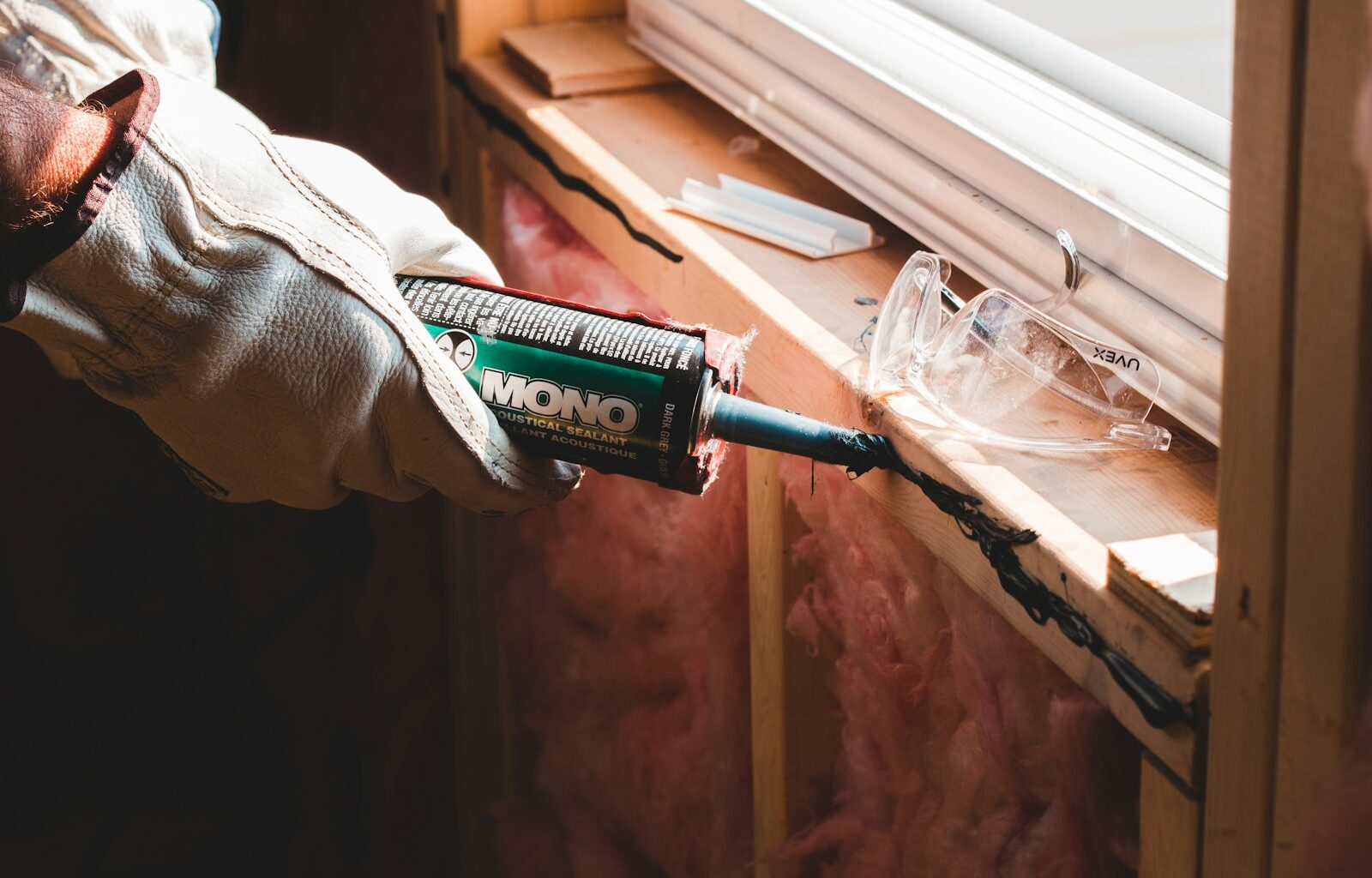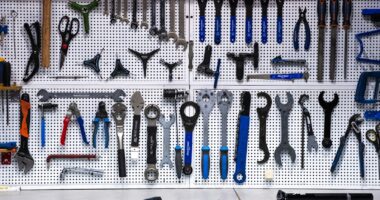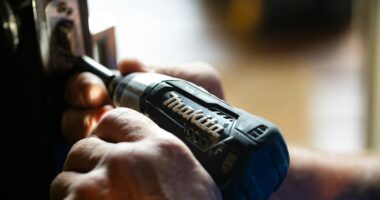Learning basic home repairs saves homeowners an average of $2,400 annually while building confidence and preventing minor problems from becoming major expenses. Home maintenance studies show that 78% of common household repairs require only basic tools and skills, yet most people pay professionals for simple fixes that take 15-30 minutes to complete.
1. Plumbing Fixes That Prevent Water Damage
1.1 Toilet Running and Water Waste Prevention
Fix running toilets by adjusting the chain length, replacing the flapper, or repositioning the float mechanism—repairs that cost under $10 but save hundreds in water bills. Running toilets waste up to 200 gallons daily while creating annoying noise and potential overflow risks.
1.2 Faucet Drip and Leak Resolution
Replace worn washers, O-rings, or cartridges to stop faucet drips that waste water and create mineral stains. Most faucet repairs require only basic tools and cost less than $15 while preventing damage to sinks and fixtures.
1.3 Clogged Drain Clearing Techniques
Clear minor drain clogs using plungers, drain snakes, or natural cleaning solutions before calling expensive drain cleaning services. Understanding drain clearing prevents emergency service calls while maintaining proper drainage throughout your home.
1.4 Pipe Insulation and Freeze Prevention
Insulate exposed pipes in basements, crawl spaces, or exterior walls to prevent freezing and bursting that causes thousands in damage. Pipe insulation costs less than $50 while preventing catastrophic water damage during cold weather.
2. Electrical Safety and Simple Repairs
2.1 GFCI Outlet Testing and Replacement
Test and replace GFCI outlets that protect against electrical shock in bathrooms, kitchens, and outdoor areas. GFCI replacement takes 15 minutes with proper safety procedures while ensuring critical electrical protection for family safety.
2.2 Light Switch and Outlet Replacement
Replace worn switches and outlets that create safety hazards or poor connections while updating home appearance and functionality. Basic electrical replacement requires only screwdriver skills while improving safety and reliability.
2.3 Circuit Breaker Understanding and Reset
Learn proper circuit breaker operation, reset procedures, and load management to prevent electrical problems and unsafe conditions. Understanding electrical panels enables quick problem resolution while preventing dangerous electrical issues.
2.4 Extension Cord Safety and Management
Use extension cords properly and temporarily while planning permanent electrical solutions for recurring needs. Proper cord management prevents fire hazards while ensuring adequate electrical supply for household equipment.
3. Wall and Surface Repair Techniques
3.1 Hole Patching and Drywall Repair
Repair small holes using spackle or mesh patches, larger holes with drywall patches, maintaining smooth wall surfaces and preventing damage progression. Wall repairs cost under $10 while maintaining home appearance and value.
3.2 Paint Touch-ups and Color Matching
Maintain painted surfaces through proper touch-up techniques, color matching, and quality preparation that extends paint life and maintains attractive appearance. Good touch-up work prevents expensive repainting while preserving home aesthetics.
3.3 Caulk Replacement and Moisture Prevention
Replace worn caulk around tubs, showers, windows, and exterior openings to prevent water damage and maintain energy efficiency. Fresh caulk prevents costly moisture damage while improving appearance and comfort.
3.4 Wallpaper Repair and Maintenance
Fix wallpaper bubbles, tears, or loose edges using appropriate adhesives and techniques that maintain attractive wall coverings. Wallpaper maintenance prevents expensive replacement while preserving decorative investments.
4. Door and Window Maintenance
4.1 Sticky Door and Adjustment Solutions
Adjust hinges, plane door edges, or lubricate hardware to resolve sticking doors that create frustration and wear problems. Door adjustments require basic tools while improving daily function and preventing hardware damage.
4.2 Window Operation and Weather Sealing
Repair window operation problems, replace weatherstripping, and maintain proper sealing that improves energy efficiency and comfort. Window maintenance prevents expensive replacement while reducing energy costs significantly.
4.3 Screen Repair and Replacement
Fix torn screens, replace screen material, or adjust screen frames to maintain insect protection and proper ventilation. Screen repairs cost under $20 while preserving comfortable outdoor air circulation and pest control.
4.4 Lock and Hardware Maintenance
Maintain door locks, handles, and security hardware through proper lubrication, adjustment, and replacement that ensures security and smooth operation. Hardware maintenance prevents lockouts while maintaining home security.
5. Appliance Troubleshooting and Care
5.1 Refrigerator Coil Cleaning and Efficiency
Clean refrigerator coils, replace water filters, and maintain proper airflow to improve efficiency and prevent breakdowns. Regular refrigerator maintenance extends appliance life by 3-5 years while reducing energy costs by 15%.
5.2 Washing Machine Balance and Drain Issues
Level washing machines, clean lint filters, and clear drain lines to prevent vibration, flooding, and mechanical problems. Washing machine maintenance prevents expensive repairs while ensuring clean, efficient laundry cycles.
5.3 Dishwasher Filter Cleaning and Performance
Clean dishwasher filters, clear spray arms, and maintain proper loading to ensure clean dishes and prevent mechanical problems. Simple dishwasher maintenance improves cleaning performance while preventing costly repair calls.
5.4 HVAC Filter Replacement and System Care
Replace HVAC filters regularly, clear outdoor units, and maintain proper airflow to improve efficiency and indoor air quality. HVAC maintenance reduces energy costs by 20% while extending equipment life significantly.
6. Exterior Maintenance and Weather Protection
6.1 Gutter Cleaning and Drainage Protection
Clean gutters regularly, repair minor damage, and ensure proper drainage to prevent foundation problems and roof damage. Gutter maintenance prevents thousands in water damage while protecting structural integrity.
6.2 Weatherproofing and Seal Maintenance
Inspect and maintain exterior seals around windows, doors, and penetrations to prevent water infiltration and energy loss. Proper weatherproofing reduces energy costs while preventing moisture damage throughout the home.
6.3 Roof Inspection and Minor Repairs
Safely inspect roofing for loose shingles, damaged flashing, or potential leaks while addressing minor problems before major damage occurs. Basic roof maintenance prevents expensive repairs while protecting interior spaces.
6.4 Exterior Paint Touch-ups and Protection
Maintain exterior paint through regular inspection, minor repairs, and touch-up work that extends paint life and protects underlying materials. Exterior maintenance preserves home value while preventing costly repainting projects.
7. Tool Organization and Safety Practices
7.1 Essential Tool Collection and Storage
Maintain basic tool collections that enable common repairs while organizing tools for easy access and proper care. Good tool organization enables quick repairs while protecting tool investments and ensuring availability.
7.2 Safety Equipment and Procedures
Use appropriate safety equipment—glasses, gloves, masks—while following safe work procedures that prevent injuries during repair activities. Proper safety practices enable confident repair work while preventing accidents and injuries.
7.3 When to Call Professionals
Recognize repair situations that require professional expertise—electrical panel work, major plumbing, structural issues—while handling appropriate DIY projects safely. Knowing limitations prevents dangerous situations while maximizing repair savings.
7.4 Maintenance Schedules and Prevention
Develop regular maintenance schedules that prevent problems through proactive care rather than reactive repairs. Preventive maintenance costs significantly less than emergency repairs while maintaining home comfort and safety.
Conclusion
Mastering basic home repairs builds confidence, saves money, and prevents minor problems from becoming major expenses while maintaining home safety and comfort.
Focus on learning fundamental skills with proper tools and safety practices rather than attempting complex repairs beyond your experience level. Start with simple projects like faucet repairs or wall patching, then gradually build skills as confidence grows.
The key to successful home maintenance lies in regular attention, proper tools, and knowing when to seek professional help for complex issues. Your investment in basic repair skills will pay dividends through reduced service calls, maintained home value, and the satisfaction of solving problems independently.











